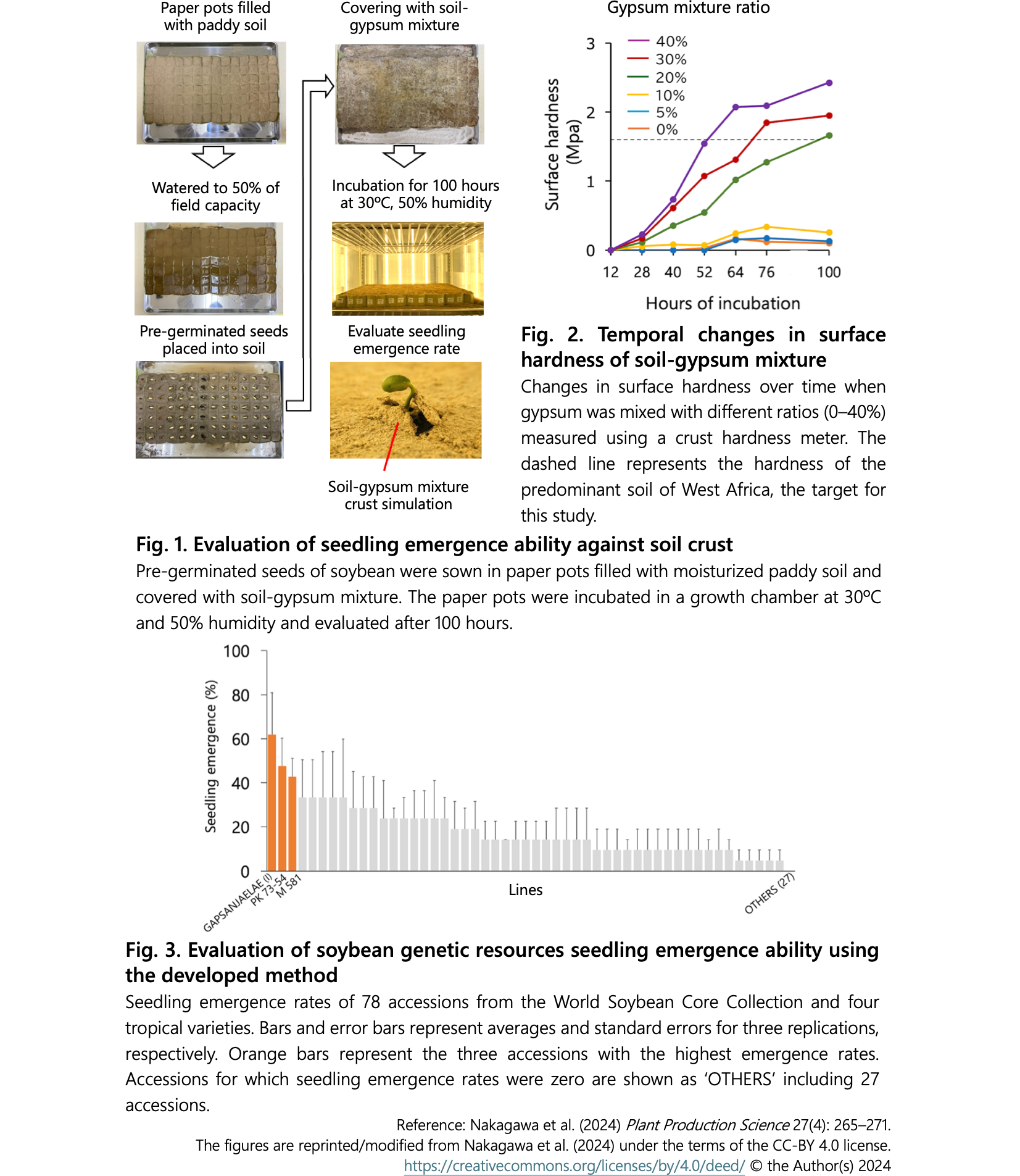A simple evaluation method for seedling emergence ability using soil-gypsum mixed crust
Description
Soil crust, a thin hard layer on the soil surface formed after rainfall, physically inhibits seedling emergence, reducing plant number, which results in cultivation concerns such as reduced yield per unit area and increased cultivation costs due to seed resowing. To cope with this problem, varieties with stable seedling emergence under crust conditions are needed, but testing these materials under crust conditions is difficult because crusts do not form uniformly under natural conditions. In previous research, to reproduce uniform crusts, an artificial rainfall simulator was used with soil from the desired environment. However, this method is not simple due to the labor required for soil collection and the high cost of the artificial rainfall device, making it unsuitable for evaluating a large number of materials at once such as genetic resources. Consequently, previous studies have not been able to evaluate enough number of materials, delaying variety breeding. In this study, we developed a method to evaluate seedling emergence against soil crust conditions using commercial gypsum mixed into soil to reproduce uniform crusts and tested this method on soybean genetic resources.
The method involves mixing commercial gypsum at a ratio of about 20–40% into the soil according to the desired hardness, following sowing of the seeds in paper pots evenly covered with the soil-gypsum mixture (Fig. 1). The paper pots were filled with high water-holding capacity soil (e.g. paddy soil) and the seeds were pre-germinated before sowing to enable highly reproducible evaluation under uniform conditions. Since the soil-gypsum mixture increases in hardness over time, the mixture ratio can be adjusted. We used a 20% mixture ratio since it reached a hardness close to that of the soils prevalent in West Africa (1.57 MPa) after 100 hours of the treatment under 30°C and 50% humidity (Fig. 2). Therefore, since no special equipment is required and the method can be performed at low cost, it is suitable for screening multiple lines with replications (Fig. 3).
This method can be applied to other crops besides soybean by using paper pots of an appropriate size for the seeds. If paper pots are not available, commercial trays can also be used instead. Although the crust hardening speed varies depending on the properties of the soil used and the temperature and humidity conditions after treatment begins, the drying time of the gypsum (set to 100 hours in this study) can be set arbitrarily depending on crop characteristics such as emergence speed and the desired crust hardness.
Figure, table
- Research project
- Program name
- Term of research
-
FY2021-2022
- Responsible researcher
-
Nakagawa Andressa ( Crop, Livestock and Environment Division )
ORCID ID0009-0006-8306-3884KAKEN Researcher No.: 70938589Iseki Kohtaro ( Biological Resources and Post-harvest Division )
Ikazaki Kenta ( Crop, Livestock and Environment Division )
ORCID ID0000-0001-5460-8570KAKEN Researcher No.: 70582021 - ほか
- Publication, etc.
-
Nakagawa et al. (2024) Plant Production Science 27(4): 265−271.https://doi.org/10.1080/1343943X.2024.2392296
- Japanese PDF
-
2024_B09_ja.pdf1.21 MB
- English PDF
-
2024_B09_en.pdf830.2 KB
* Affiliation at the time of implementation of the study.

